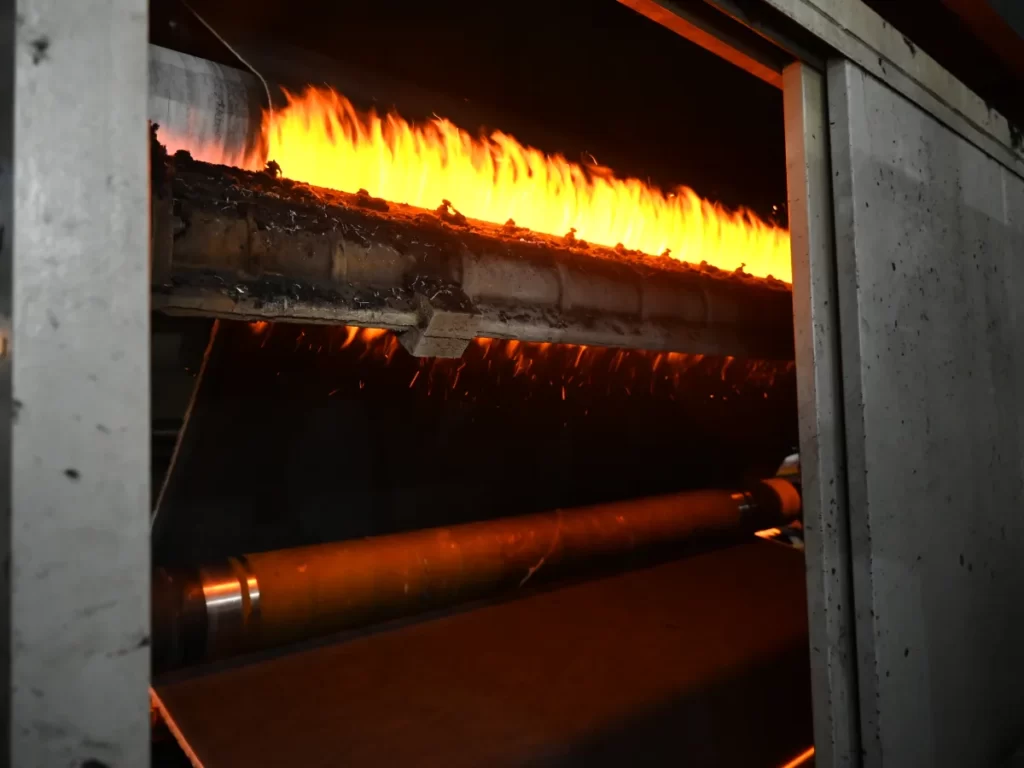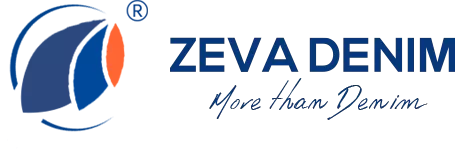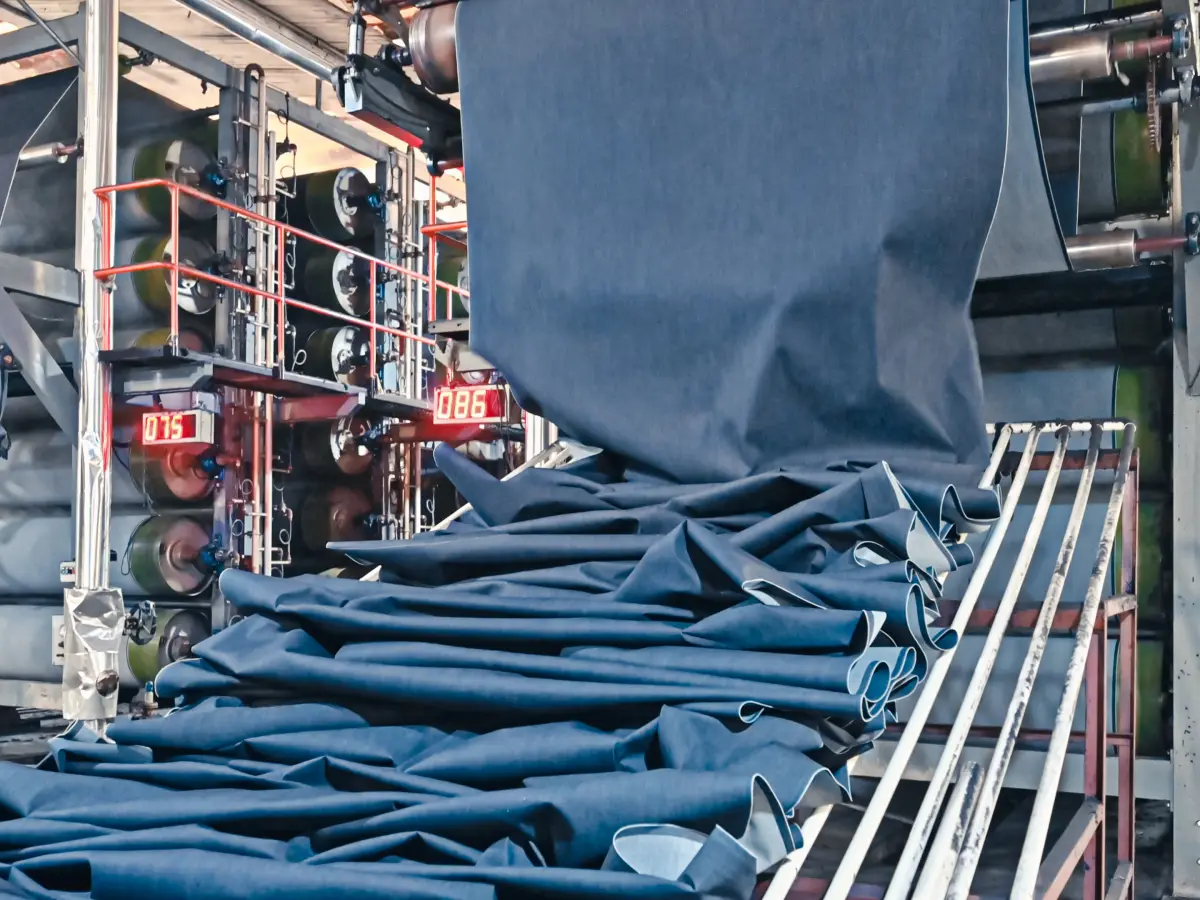Welcome to our series of articles on the denim manufacturing process. In a series of posts, we will cover all the processes involved in denim fabric production including cleaning cotton fibers, blending, spinning, warping, dyeing, beaming, sizing, weaving, finishing, and packaging. From cotton fiber to the final product you can buy at ZEVA DENIM.
Denim is a versatile and durable cotton fabric that is popular in the apparel industry. This fabric is used to produce garments such as jeans, jackets, skirts, and shorts. The production process of denim involves many steps, the final process is the finishing and packaging process.
During the finishing and packaging process, denim fabric is treated to improve its texture, durability, and aesthetics. The process also involves packaging the finished product for shipping and delivery to retailers. This article will explore the finishing and packaging process of denim manufacture and the importance of incorporating sustainable practices, innovative technologies, and quality control measures.
Denim Finishing Process
Regular Finishing
Most denim, including raw denim, undergoes finishing. It’s the last stage of denim production and is an important factor in the fabric’s performance, appearance, and value.
The finishing process involves several techniques that can change and improve the look and feel of denim fabrics.
- Sanforization (Pre-shrinking)
Eliminates shrinkage: Solves a key problem of unfinished denim, and keeps its shape and size stable.
- Pre-skewing
Eliminates leg twist: Prevents denim from skewing in the direction of the twill line due to washing and shrinking.
- Heat Setting
Controls stretch: Controls the elasticity and dimensional stability of stretch denim made with thermoplastic fibers such as polyester or elastane.
- Singeing
Removes fluff from the fabric’s surface: Burns away loose, hairy cotton fibers on the surface of denim, for a smoother feel.

- Mercerization
Increases smoothness and luster: The fabric is soaked in a chemical solution that swells the cell walls of the fibers for a more even look and smoother hand feel.
Functional Finishing
Denim is becoming more and more practical as technology develops and new treatments are applied that enhance its properties.
- Water Repellent
Water does not penetrate the denim fabric as easily, but the fabric remains breathable. There are different levels of water protection: water-resistant, water-repellent, and waterproof.
Denim coating provides extra protection to the fabric.
- Antibacterial
Protects denim from microorganisms including bacteria, mildew, and the deterioration and odors they may cause.
- Stain Resistant
Prevents liquids, oils, and dirt particles from being absorbed by the fabric.
- UV protection
Absorbs short-wave solar radiation or scatters ultraviolet rays, thereby reducing skin’s exposure to ultraviolet rays.
- Mosquito Repellent
This finish emits odors that repel mosquitoes to prevent bites and the viral infections they may transmit.
Denim Coatings
Denim Coatings is also one of the optional steps in the finishing process.
Denim coatings are used to impart certain desirable properties to denim such as water repellency, stain repellency, flame retardancy, and antimicrobial properties. These coatings are often used as finishes for denim during the manufacturing process.
- PU Coating
Gives the fabric luster and a rubbery feel; it’s also water-resistant.
- WaxCoating
There are 2 types of wax: paraffin and beeswax Paraffin usually has a matte look. Both provide water resistance.
- MetallicCoating
Provides a shiny surface, and comes in different colors and densities.
- ReflectiveCoating
Reflects light, making the wearer more visible in the dark.
- GlitterCoating
Adds sparkle to the fabric, and comes in a variety of types and colors.
- PigmentCoating
Results in a worn effect after every wash due to fading properties. Normally used on colored denim.
Denim Printing
Denim printing is also one of the optional steps in the finishing process.
Denim printing is a widely used technique that produces different fabric patterns and designs. Commonly used techniques include screen printing, digital printing, and thermal transfer printing.
- Discharge Printing
An indigo-removing agent is printed onto dyed fabric, leaving a bleached-out pattern.
- Foil Printing
Metallic or pigment foil is applied by heat and pressure, resulting in a mirrored effect.
- Pigment Printing
Pigments are printed onto the fabric using a roller, rotary screen, or stencil. The print may fade after washing.
- Flock Printing
Short, finely cut natural or synthetic fibers are applied to the fabric with adhesive.
- Emboss Printing
Images or patterns are pressed into the fabric through heat and pressure. This technique creates a 3D effect.
Denim Weight: So What Are the Grades of Denim Weight?
The finishing process also affects the weight of the denim. Weight is measured using the “ounces per square yard” measurement. A higher weight means the denim is thicker and more durable.
Currently, three types of denim are classified by weight: lightweight, medium-weight, and heavyweight. The characteristics between them and what type of denim clothing they are suitable for can be seen in the chart below.

Denim Packaging Process
Packaging includes labeling, marking, folding, and packaging denim products for shipping and delivery.

Labels provide information about a product, such as size, color, and material, while markings are used for branding and identification purposes.
Standard folding and packaging techniques are used to ensure that the product is neat and compact for easy transportation.
The logistics involved in shipping and delivering your product include shipping, packaging, and documentation.
Quality Control During Finishing and Packaging
Before finished denim products are released to the market, they undergo several quality control tests to ensure that they comply with the required standards and regulations.
Quality control standards are set by denim manufacturing regulators and include physical properties such as color fastness, wash resistance, and dimensional stability. Inspection and testing methods used during the finishing and packaging process include visual inspections and performance tests such as wash and dry cycles.
Common defects in denim products include shrinkage, stretching, bleeding, and damaged seams. Precautions include maintaining a steady wash cycle and using high-quality materials.
Summary
Denim manufacturers should also keep a close eye on consumer trends and demands to maintain their presence in the market.
As consumers become more aware of the environmental impact of clothing, sustainable manufacturing practices will become increasingly important.
Moreover, with the advent of new technologies, denim manufacturers can explore new innovative finishing and packaging techniques that can help them stand out in the competitive market. For example, denim products are designed with 3D printing technology, adding a unique touch to the finished denim.
In summary, the finishing and packaging process in denim manufacturing is a critical step in producing high-quality denim products. It involves a range of techniques and processes that require precision and attention to detail. Denim manufacturers must combine sustainable practices, innovative technologies, and quality control measures to create denim products that meet consumer demands while staying true to brand identities.
After the finishing and packing process is complete, the production process of denim fabric is over.
This is the last article in a series on how denim is made.
If you want to review previous articles, please click on the general article: Step-By-Step Guide on How Denim Is Made –Understanding the Manufacturing Process.
If you want to continue learning more about denim fabrics, please follow our blog.
Thanks for reading!





